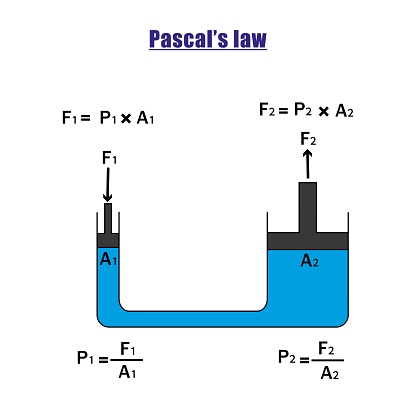The Brooklyn Bridge: An Epic Story By Barbara Mensch

Table of Contents
The Genesis of a Vision: The Roebling Family and the Bridge's Conception
The Brooklyn Bridge's story begins with a visionary mind: John A. Roebling, a brilliant engineer who dared to dream of a suspension bridge unlike any seen before. His design, revolutionary for its time, utilized cutting-edge 19th-century technology to overcome significant engineering challenges. This was no simple feat; creating a suspension bridge of this magnitude required innovation and meticulous planning.
- Groundbreaking Design: John A. Roebling's design incorporated groundbreaking innovations in suspension bridge technology, significantly advancing the field of engineering. His meticulous calculations and innovative use of materials were crucial to the project’s success.
- 19th-Century Technological Hurdles: Constructing such a massive structure in the mid-19th century presented numerous technological hurdles. The sheer scale of the project, coupled with the limitations of available tools and materials, posed significant challenges.
- Revolutionary Aspects: Roebling's design pushed the boundaries of what was considered possible, introducing new techniques in cable spinning and the use of steel, which greatly increased the bridge's strength and durability.
- Early Successes: The initial phases of construction saw remarkable progress, demonstrating the effectiveness of Roebling's meticulous planning and the skill of his workforce.
Triumph Over Tragedy: The Challenges and Perseverance During Construction
Tragedy struck early in the project. John A. Roebling died from tetanus after a construction accident, leaving his son, Washington Roebling, to take the reins. However, Washington himself soon fell victim to "caisson disease" (the bends), a debilitating illness caused by working in compressed air. This seemingly insurmountable obstacle threatened to halt the entire project.
- Washington Roebling's Leadership: Despite his illness, Washington Roebling remained determined to oversee the project's completion. He directed construction from his sickbed, demonstrating remarkable leadership and unwavering dedication.
- Emily Warren Roebling's Extraordinary Role: The story of the Brooklyn Bridge would be incomplete without recognizing the crucial role played by Emily Warren Roebling, Washington’s wife. She learned engineering principles to communicate with the construction team, effectively acting as her husband’s intermediary and ensuring the project's progress. Her resilience and intelligence were instrumental in the bridge's completion.
- Overcoming Obstacles: The construction process was fraught with other challenges: labor disputes, financial constraints, and unforeseen engineering setbacks all threatened to derail the project.
- Perseverance and Dedication: The unwavering dedication of Washington Roebling and Emily Warren Roebling, along with the perseverance of the entire construction team, stood as a testament to the human spirit.
An Engineering Masterpiece: The Construction and Completion of the Brooklyn Bridge
The construction of the Brooklyn Bridge was a monumental undertaking, requiring meticulous planning, innovative construction techniques, and the use of cutting-edge materials. The scale and complexity of the project were unprecedented.
- Innovative Construction Techniques: The construction team employed innovative techniques, including the use of caissons for underwater foundation work. These techniques were refined and improved during the course of construction, showcasing the adaptability and skill of the workers.
- Strong and Durable Materials: The bridge's strength and durability are a result of the careful selection of materials. The steel cables, a testament to the era's advancements in metallurgy, and the robust masonry work ensured long-lasting resilience.
- Human Effort and Scale: The sheer human effort involved in constructing the bridge was staggering, involving thousands of workers over many years. It stands as a symbol of collective human achievement.
- Completion and Celebration: The Brooklyn Bridge was finally completed on May 24, 1883, a moment of immense celebration marking a triumph over adversity and a testament to unwavering determination. Its impact was immediate, connecting Brooklyn and Manhattan in a way that forever changed the city's landscape.
- Impact on NYC: The completion of the Brooklyn Bridge dramatically altered the landscape of New York City, facilitating population growth and economic expansion in Brooklyn. It became a vital transportation link, transforming the city's infrastructure.
The Brooklyn Bridge's Enduring Legacy: A Symbol of American Ingenuity
The Brooklyn Bridge's legacy extends far beyond its role as a vital transportation artery. It stands as a national landmark, a symbol of American ingenuity, and a lasting testament to the power of human collaboration.
- National Landmark and Cultural Icon: The bridge is not only a national landmark but also a cultural icon recognized worldwide. Its iconic silhouette is instantly recognizable and often used to represent New York City itself.
- Tourism and Architectural Significance: The Brooklyn Bridge is a major tourist attraction, drawing millions of visitors each year. Its architectural significance continues to inspire engineers and architects, influencing bridge design to this day.
- Continued Importance: The Brooklyn Bridge remains a vital part of New York City's infrastructure, carrying significant traffic daily and continuing to serve its original purpose. Its enduring importance to the city cannot be overstated.
- American History: The bridge serves as a powerful symbol in American history, representing the nation's spirit of innovation and its capacity to overcome seemingly insurmountable obstacles.
Conclusion
Barbara Mensch's "The Brooklyn Bridge: An Epic Story" offers a compelling narrative of this iconic structure, weaving together the human drama, engineering marvels, and enduring legacy of the Brooklyn Bridge. It reveals the complexities and challenges involved in its creation, highlighting the remarkable contributions of the Roebling family and the countless workers who brought this ambitious vision to life. Understanding the story behind this architectural masterpiece enriches our appreciation for its enduring impact on New York City and American history. Discover the full, captivating story of the Brooklyn Bridge by reading Barbara Mensch's "The Brooklyn Bridge: An Epic Story." Learn more about this architectural marvel and the inspiring individuals who made it a reality. Dive into the rich history of this iconic landmark, and explore the untold stories behind this engineering triumph!

Featured Posts
-
 Diddy Assault Accusations Cassies Response And Happy Announcement
May 18, 2025
Diddy Assault Accusations Cassies Response And Happy Announcement
May 18, 2025 -
 2025 Spring Breakout Rosters Key Players And Emerging Talent
May 18, 2025
2025 Spring Breakout Rosters Key Players And Emerging Talent
May 18, 2025 -
 Spring Breakout 2025 Roster Composition And Team Strategies
May 18, 2025
Spring Breakout 2025 Roster Composition And Team Strategies
May 18, 2025 -
 Spring Breakout 2025 Rosters Who To Watch
May 18, 2025
Spring Breakout 2025 Rosters Who To Watch
May 18, 2025 -
 Novak Djokovic In Miami Acik Final Yolu
May 18, 2025
Novak Djokovic In Miami Acik Final Yolu
May 18, 2025
Latest Posts
-
 Offentlig Kritik Pedro Pascal Mot J K Rowling
May 18, 2025
Offentlig Kritik Pedro Pascal Mot J K Rowling
May 18, 2025 -
 Analys Av Kontroversen Kring Pedro Pascal Och J K Rowling
May 18, 2025
Analys Av Kontroversen Kring Pedro Pascal Och J K Rowling
May 18, 2025 -
 Reaktioner Pa Pedro Pascals Uttalande Om J K Rowling
May 18, 2025
Reaktioner Pa Pedro Pascals Uttalande Om J K Rowling
May 18, 2025 -
 The Last Of Us Season 2 Addressing Pedro Pascals Characters Demise
May 18, 2025
The Last Of Us Season 2 Addressing Pedro Pascals Characters Demise
May 18, 2025 -
 J K Rowling Vs Pedro Pascal En Konflikt Om Transraettigheter
May 18, 2025
J K Rowling Vs Pedro Pascal En Konflikt Om Transraettigheter
May 18, 2025
